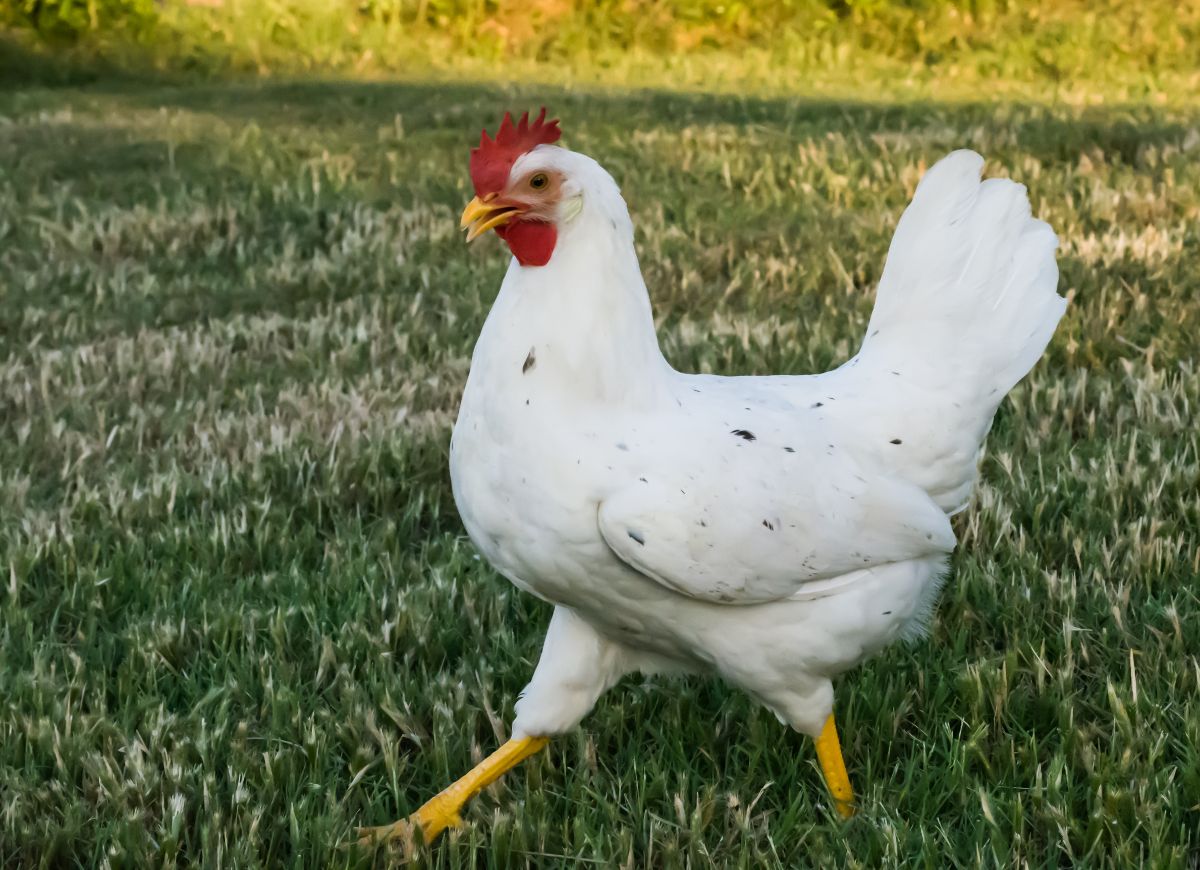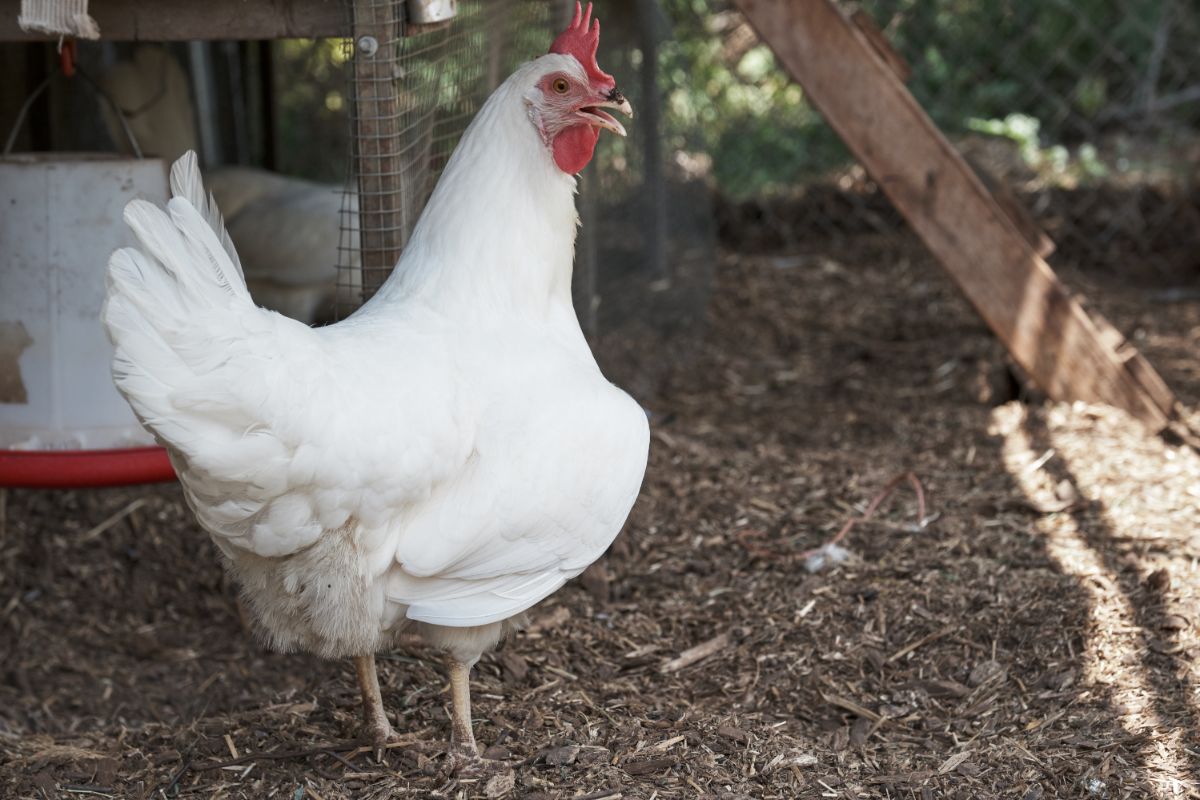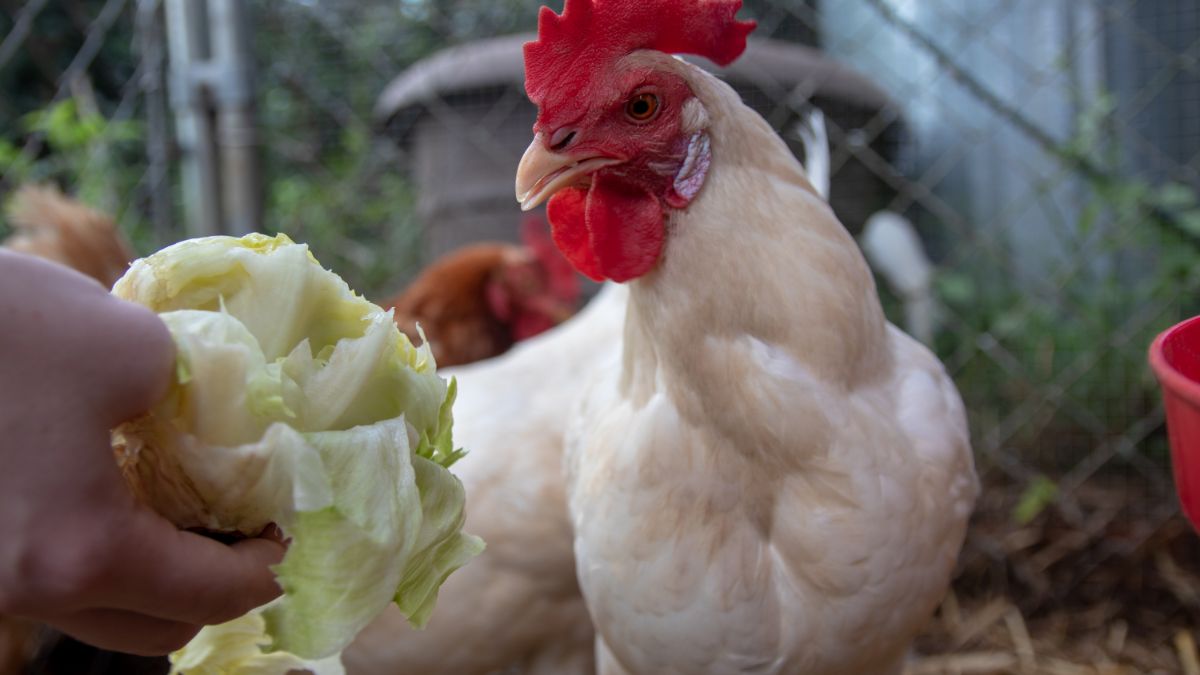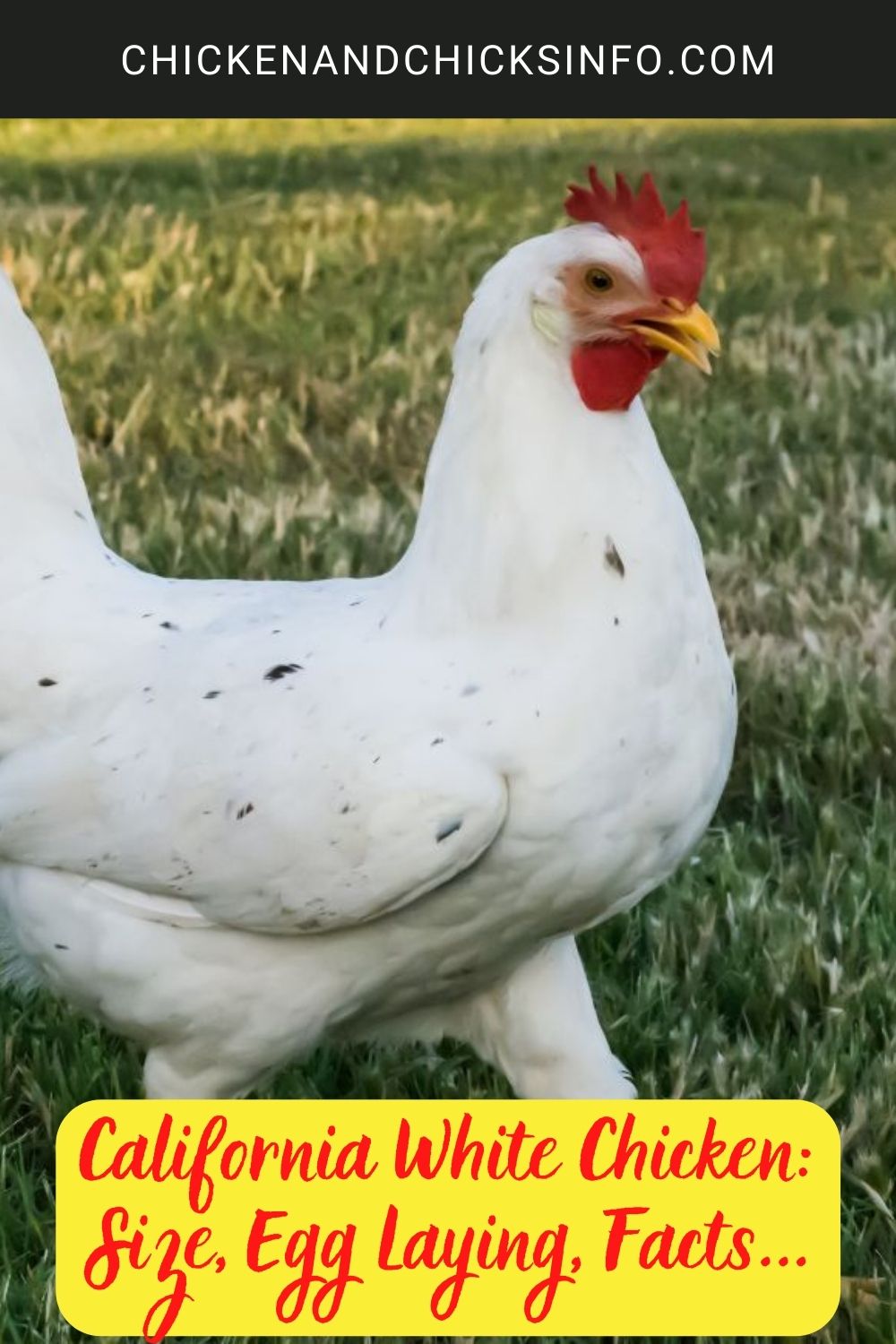
The California White Chicken is a wonderful breed. They are fun, easy to keep as backyard pets, and excellent layers producing around 300 large white eggs a year.
It’s a sex-linked cross breed created from a White Leghorn hen and a Gray California rooster.
The best part is that this sex-link breed has the best traits from each breed. They lay frequent large eggs like the White Leghorn, but as not as noisy. They get their size and mild social nature from the Gray California.
If you’re looking for an excellent layer for your backyard chicken flock, you should consider the California White.
Here’s everything you need to know about this breed:
Jump to:
California White Chicken Temperament and Personality
I’ve seen some owners describing this breed as “aloof” and “distant”. I guess it depends on what they’re comparing them to.
I’ve always found this breed to be very social and interactive, both with other chicks and humans. They even welcome some fussing and stroking too.
I see a lot of sellers advertising them as good in small spaces, which is true. This doesn’t mean you can cram loads in your yard though, it’s more of a nod to the fact that problems between hens are rare when living together.
They are also very adaptable to the weather. I have a friend with a number of them in his flock and he lives in Colorado, and it gets very cold over there in the winter months.
Overall, they’re just very friendly, adaptable, backyard chickens that are great for beginners and will provide plenty of eggs.
Physical Characteristics

They look almost identical to White Leghorns, and you can be forgiven if you haven’t spotted the difference if you’re new to chickens.
There are a few physical differences between the two, however:
- Californians tend to have larger combs
- They are slightly larger birds overall
- They have some black spots on their feathers, usually near their lower back
Something worth noting is that they are able to fly higher than your average chicken. They aren’t going to take flight and escape, well not unless you have low parameter fencing.
But I’ve seen them get to places that were thought impossible. Such as on top of the coop, to then make their way on top of another outhouse building from there.
Some owners even clip some of their primary flight feathers. These are the longest feathers near the tip of the wing. It doesn’t hurt them at all, but it does curb their ability to get off the ground.
California White Pullets and Point-of-Lays
If you’re picking up a pullet or a point-of-lay for the purpose of getting fresh eggs as soon as possible, the California White is a great layer.
They typically start laying eggs around 17 weeks of age. They are prolific layers, too. You can expect anywhere up to 300 eggs a year finding in their nesting box most days.
This is interesting because they typically lay more eggs per year than a White Leghorn which is one of the main laying breeds.
California White Chicken Egg Color, Size, and Production
They lay large to jumbo sized white eggs.
I don’t know about you, but I find white eggs the most appetizing looking. There is something pure about them, and it always makes me think of duck eggs.
They lay so frequently - 5 or so a week - that you’ll be popular with your friends, family, and neighbors if you want to be generous with your yield.
Related content - how to get chickens to lay larger eggs.
Are They a Good Backyard Chicken Breed?

Yes, they are one of the best breeds to keep as a backyard chicken. Assuming you want plenty of tasty eggs that is!
They check most of the boxes for what people look for when choosing the best breed for their backyard setting:
Lots of large eggs - eggs are typically the number one factor when choosing a breed.
Low maintenance - most backyard chickens are low maintenance, just keep them fed, watered, and provide good living conditions.
Adaptable to weather - they are able to live in both warm and cold climates. It’s worth double-checking with the hatchery or breeder you buy from just what temperatures they recommend though.
Fine in small spaces - You still need to provide adequate spacing and living conditions for your birds, but they’re not a breed that demands a lot of space.
Not too noisy - As one of the quieter breeds (talking about hens not roosters) they are neighbor-friendly if you’re urban chicken keeping.
California White Roosters
I looked for a rooster once and they were surprisingly hard to find. That might not be the case if you look now, but I remember it being almost impossible to find one.
This is probably because the hens are in such high demand for their eggs, no one wants a rooster. So they end up as food.
If you buy some straight run or unsexed chicks there’s a chance you’ll end up with one.
They look very similar to the hens. The main differences with the roosters I’ve seen are that they aren’t as white, they have thicker neck feathers, shorter tail feathers, and of course have that more upright rooster posture.
If you’re introducing a rooster into your flock, he’s going to fertilize eggs. The Cali White isn’t one of the more broody breeds, so you will either have to be patient or incubate eggs yourself.
Don’t forget to make sure you’re allowed roosters in your zoning area. A lot of areas, especially suburban areas, don’t allow roosters due to the noise.
If you read the rules for your area, however, a lot of times it says no “crowing roosters”. This is a loophole a lot of backyard chicken keepers use to keep a rooster that doesn’t crow.
A rooster that doesn’t crow, you say?
They use no-crow collars to reduce their crowing to a faint noise. You can read more about no-crow and anti-crow collars here.
Related content - How long do chickens sit on eggs?
Interesting Facts About the California White
Here are some other interesting facts about this magnificent backyard chicken breed:
They are quieter than the average hen, which is one of the reasons why they are one of the best breeds for urban settings.
They can fly slightly higher than the average chicken. Some owners get a surprise when they find them in a neighbor's garden or on the roof of the coop.
The average weight of a rooster is 6 lbs, and a hen is 5.5 lbs.
Like a lot of fowl that are used for their egg production, they are prone to egg binding. You can reduce this by making sure they have excellent living conditions and plenty of calcium in their diet.
They are not known for being broody hens, so don’t expect to see them sitting on a clutch of eggs very often.
It’s not a breed recognized by the APA (American Poultry Association) as it’s a hybrid. So, no conservation status.
In Summary
If you’re looking for an easy to keep breed of backyard chicken that will produce a lot of eggs - you should pick up some California White chickens.
They are wonderfully social and fun birds. You’ll find around 5 large white eggs in their nesting boxes every week, all year round. They are fairly quiet, peaceful, and friendly birds, I recommend them.
Just think, if you have as few as 4 of these chickens in your flock, you will be bringing in around 20 eggs a week. That’s enough to keep you and your family, as well as your extended family and friends happy!





